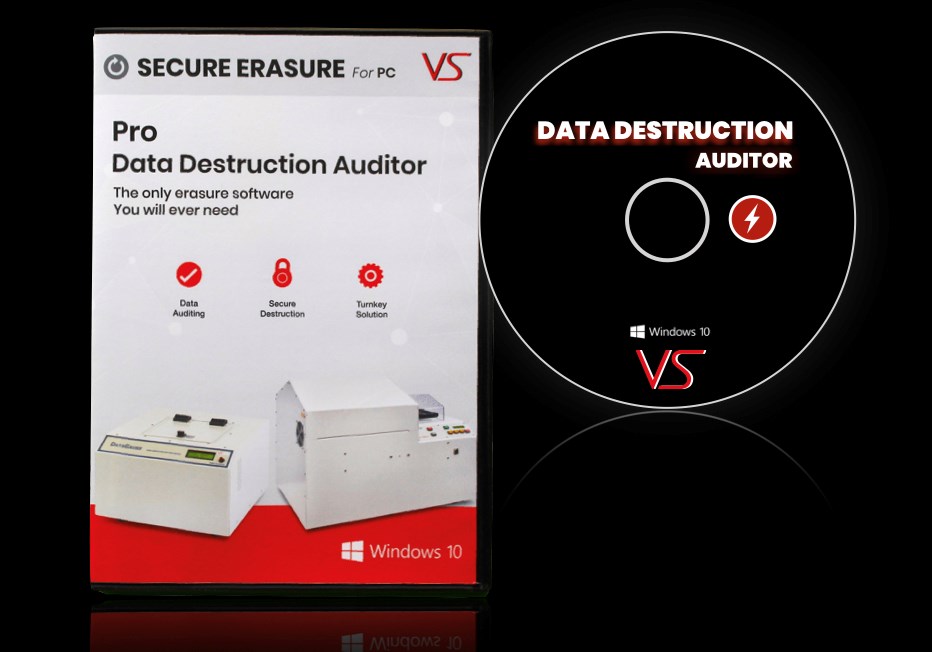Just How Proper Information Devastation Adds to Robust Computer Safety And Security Services and Mitigates Threats of Information Breaches
In today's electronic landscape, the importance of appropriate information destruction can not be overstated, as it serves as a basic component of extensive computer system security services. The ramifications of poor data destruction prolong past plain compliance; they can exceptionally impact a company's cybersecurity posture and track record.
Relevance of Data Damage
In today's electronic landscape, the importance of data destruction can not be overstated. As organizations progressively count on electronic properties, the possible risks related to data breaches and unauthorized gain access to magnify. Effective data damage is an important part of an extensive details safety and security approach, safeguarding delicate details from falling right into the hands of malicious actors.
When information is no more needed, merely deleting files or formatting hard disks wants. Recurring data can typically be recuperated using conveniently available tools, positioning significant threats to both organizations and individuals. This underscores the need for durable data destruction techniques that make sure all data is irretrievably removed.
Additionally, regulative compliance mandates, such as GDPR and HIPAA, stress the commitment to secure delicate information, including its appropriate disposal. Non-compliance can bring about extreme financial penalties and legal effects. data destruction. Therefore, incorporating reliable data devastation procedures not only improves safety but additionally fortifies a company's track record and trustworthiness

Approaches of Secure Data Erasure
Numerous effective approaches of protected information erasure can be employed to make sure that sensitive info is permanently eliminated from storage space devices. One extensively recognized technique is information overwriting, which involves changing existing information with random patterns several times. This approach considerably reduces the possibilities of information recuperation, although it might not work versus sophisticated forensic techniques.

Physical devastation is additionally a reliable technique, where storage devices are rendered unusable through shredding, crushing, or incineration. This method makes certain that data can not be recovered whatsoever but requires careful handling of hazardous products.
Last but not least, specialized software program devices created for safe data erasure supply performances that follow various erasure standards. These devices often consist of attributes like confirmation processes to confirm successful information devastation.
Utilizing these techniques in combination can enhance data security and minimize the threats related to data breaches, ensuring that delicate info is not unintentionally exposed.
Legal and Conformity Considerations
The techniques employed for safe and secure information erasure not only offer to secure sensitive details however likewise must line up with legal and compliance structures regulating information protection. Organizations are called for to abide by numerous policies, such as the General Information Protection Guideline (GDPR), the Medical Insurance Portability and Responsibility Act (HIPAA), and the Payment Card Market Information Safety And Security Criterion (PCI DSS) These regulations mandate certain methods for data managing and devastation, guaranteeing that individual and delicate data is irretrievably eliminated when no more required.
Failure to abide by these lawful needs can result in considerable penalties, including penalties and reputational damages. Furthermore, companies must preserve records of information devastation procedures, showing compliance throughout audits or examinations. This documents not just protects against legal consequences however additionally enhances trust with customers and stakeholders, showcasing a commitment to data safety.
Including lawful and conformity factors to consider into information destruction techniques is vital for any type of organization. It decreases the danger of information violations and illustrates an aggressive technique to securing delicate info, eventually promoting a culture of safety and security and accountability across the company.
Effect On Cybersecurity Posture
Efficient information devastation considerably boosts an organization's cybersecurity posture by lowering the prospective strike surface for cyber threats. When sensitive information is not appropriately ruined, it stays obtainable to destructive actors who can manipulate this info for unapproved access, identification burglary, or company espionage. By applying robust data devastation procedures, companies can properly decrease the risk of information violations and boost important site their total safety framework.
Furthermore, the protected disposal of obsolete or unnecessary information not just protects delicate details yet likewise assists organizations follow market policies and standards. Failing to appropriately destroy data can bring about serious lawful her comment is here consequences and reputational damage, more endangering an organization's cybersecurity stance.

Inevitably, focusing on efficient data damage is vital for cultivating a durable cybersecurity pose, making certain that companies stay cautious versus progressing cyber risks while shielding their important possessions and stakeholders.
Best Practices for Organizations
Carrying out ideal methods for data devastation is important for companies intending to image source secure sensitive details and reduce cybersecurity risks. Most importantly, organizations should establish a detailed data damage policy that details procedures and obligations. This policy must conform with pertinent policies, such as GDPR or HIPAA, ensuring lawful conformity.
Secondly, it is necessary to utilize approved information sanitization methods, consisting of information cleaning, degaussing, and physical damage, tailored to the sort of information and storage space medium. Using qualified specialists for data devastation solutions improves the reliability of these approaches.
Moreover, organizations should keep a thorough stock of all information storage tools, making sure that all out-of-date or replaced tools undergoes devastation. Normal audits of information destruction techniques can assist determine weak points and enhance compliance.
Staff member training is one more important aspect, as team needs to comprehend the value of data destruction and follow developed procedures. Organizations need to record all information devastation tasks to offer responsibility and traceability, which can be indispensable during audits or in the event of a breach.
Conclusion

One commonly acknowledged technique is data overwriting, which involves replacing existing information with random patterns several times.The methods employed for secure data erasure not just offer to safeguard delicate info however additionally has to line up with legal and conformity frameworks regulating data security. These regulations mandate certain procedures for information handling and devastation, making sure that delicate and personal data is irretrievably removed when no longer required.
By implementing robust information destruction protocols, organizations can properly lessen the danger of data violations and boost their total protection framework.
In final thought, appropriate data damage is essential for improving computer system protection services and mitigating the dangers associated with data violations. - data destruction